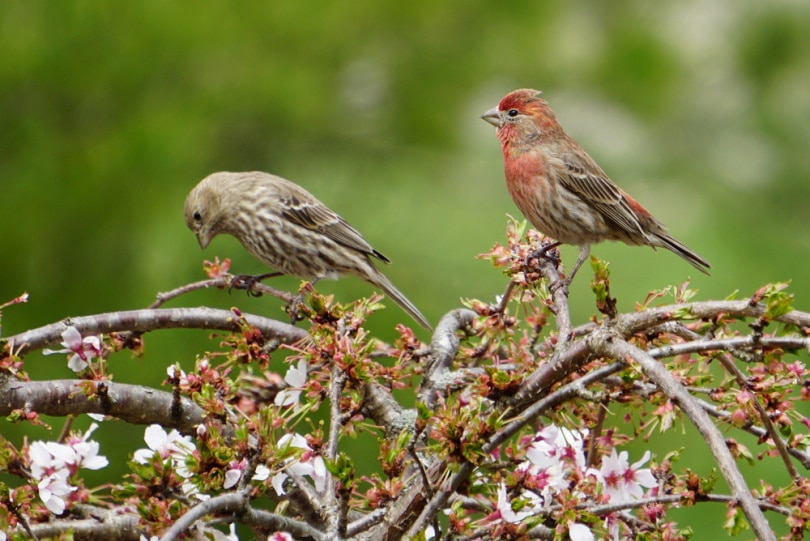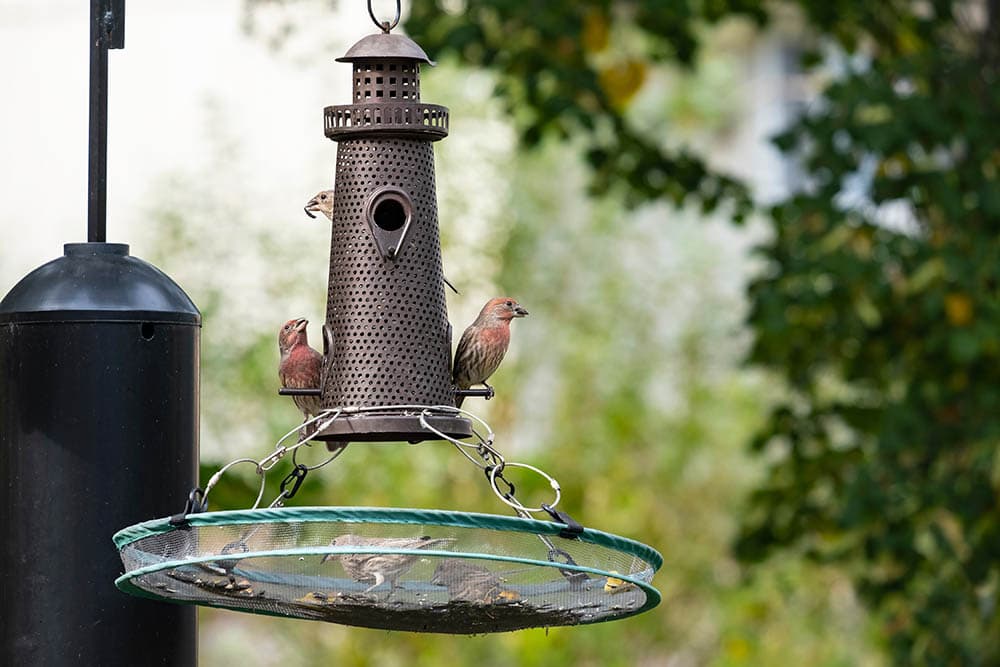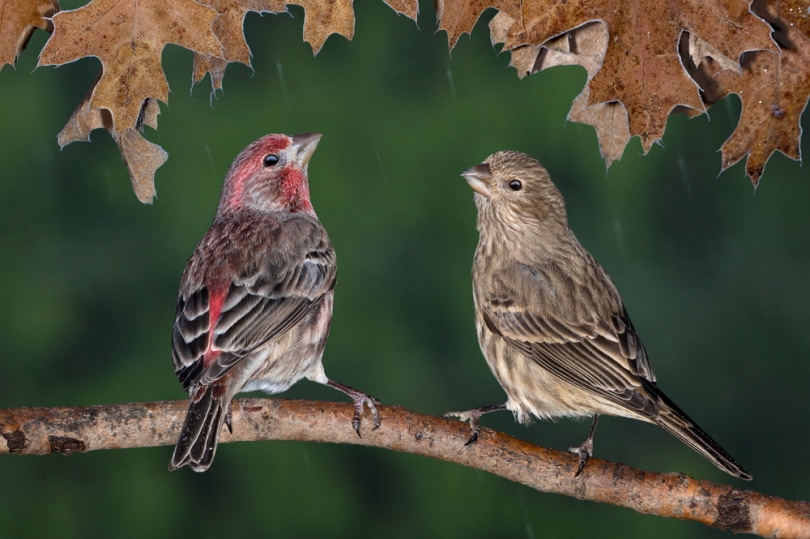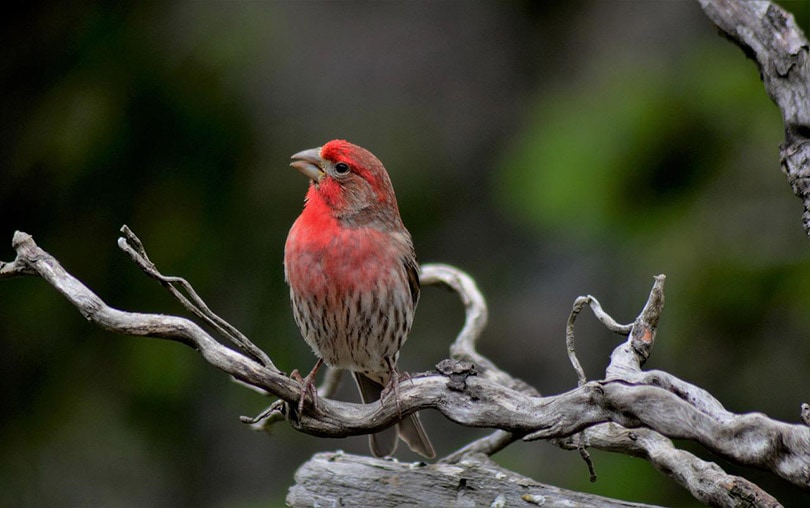Do House Finches Mate for Life? Everything You Need to Know!
Last Updated on

House Finches are a monogamist species of songbird. Males and females will pair up before the breeding season and stay together until the young have been raised. However, House Finches do not mate for life because they may get a new partner during later breeding seasons.
Keep reading to learn more about the House Finch. This article takes a close look at the birds’ monogamous breeding practices.

Are House Finches Monogamous?
House Finches are monogamous. This means that males and females will pair off and mate with each other exclusively throughout the breeding season. Often, the males and females will continue breeding throughout the season, even if a brood has already been laid.

Do Finches Mate for Life?
Even though House Finches are monogamous, they do not necessarily mate for life. In order for a species to be monogamous, they only have to mate with one partner at a time. Because Finches mate with one partner per season, they are considered monogamous.
From season to season, a House Finch’s partner may change, though. As such, House Finches do not mate for life, though it isn’t necessarily uncommon for House Finches to mate for more than one season.
How Do Finches Mate?
Female House Finches begin looking for mates as soon as the winter. That way, breeding pairs are already formed by the time the breeding season begins. Females will specifically look for males that have bright red feathers, which are developed by the food the male eats. While the male is courting the female, he will bring the female food. This feeding practice often goes well into the breeding period and incubation.
Males will also partake in showy displays. The most common for House Finches is the butterfly flight. As its name suggests, the butterfly flight mimics the flying pattern of butterflies.

The House Finches will begin breeding between March and August. In just one summer, a single breeding pair can lay as many as six clutches. Although they may lay up to six clutches, most House Finch pairs only raise up to three clutches.
The female is responsible for building the nest. She will build a shallow, cup-shaped nest from grass and available fibers. Once she is ready to lay, there will be three to six bluish, greenish-white eggs with black spots. Meanwhile, male House Finches do not defend their territory, but they will defend the female Finch and hatchlings.
Unlike other species, both parents are responsible for feeding the nestling and cleaning up the fecal sacs. The nestlings will leave their nest whenever they are between 12–19 days old. The male continues feeding these fledglings for another 2 weeks while the female builds another nest for the next brood.
How Long Does It Take for Finches to Mate?
The courtship and mating process for House Finches is long. Because the look for partners begins as early as winter, it can take months for House Finches to mate. Once they have begun mating, they will stay mated for the rest of the breeding season.


Final Thoughts
Although House Finches do not mate for life, they are considered a monogamous species. In other words, males will exclusively breed with one female for the entirety of the breeding season, but the breeding partners will change from season to season.
Not only are House Finches monogamists, but both parents are dedicated to raising the young. This explains why it is so common to see a whole flock of house benches at your birdfeeder!
Featured Image Credit: Chris Chaney, Shutterstock
About the Author Robert Sparks
Robert’s obsession with all things optical started early in life, when his optician father would bring home prototypes for Robert to play with. Nowadays, Robert is dedicated to helping others find the right optics for their needs. His hobbies include astronomy, astrophysics, and model building. Originally from Newark, NJ, he resides in Santa Fe, New Mexico, where the nighttime skies are filled with glittering stars.
Related Articles:
10 Types of Hummingbirds in Arkansas (With Pictures)
8 Types of Hummingbirds in Nebraska (With Pictures)
5 Types of Hummingbirds in Idaho (With Pictures)
3 Types of Hummingbirds in Mississippi (With Pictures)
8 Types of Hummingbirds in Kansas (With Pictures)
5 Types of Hummingbirds in West Virginia (With Pictures)
5 Types of Hummingbirds in Ohio (With Pictures)
Where Do Nuthatches Nest? Nuthatch Nesting Habits Explained
